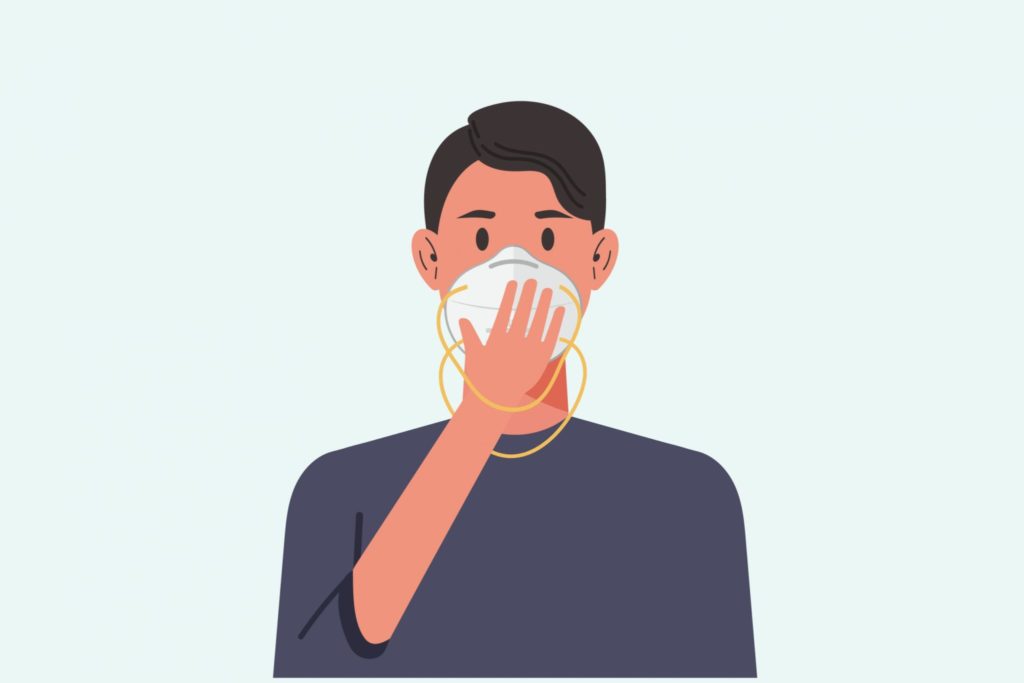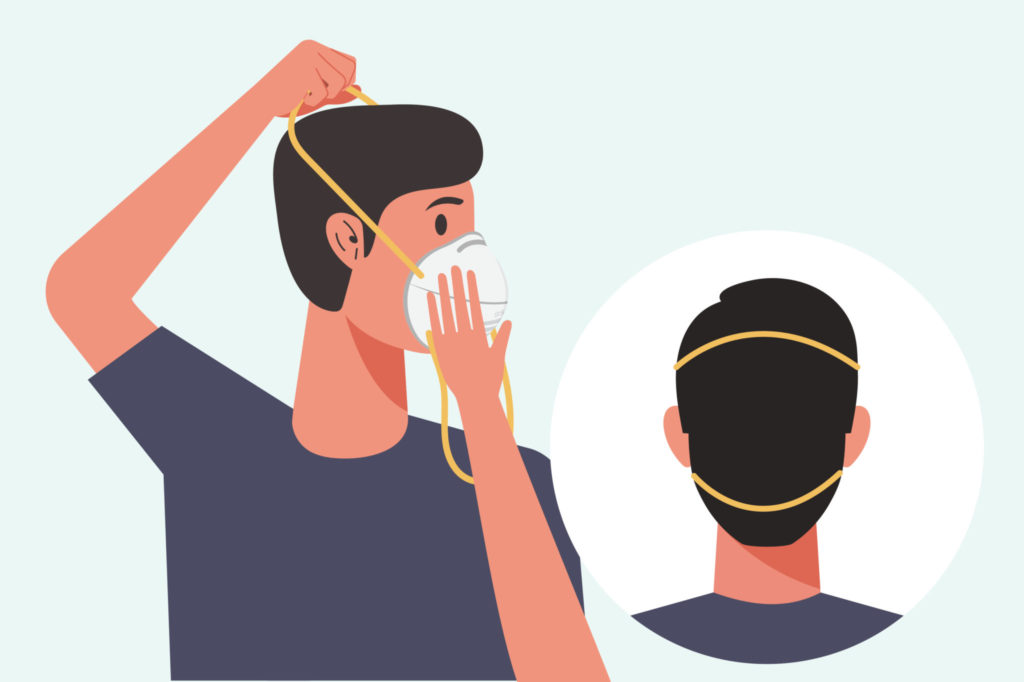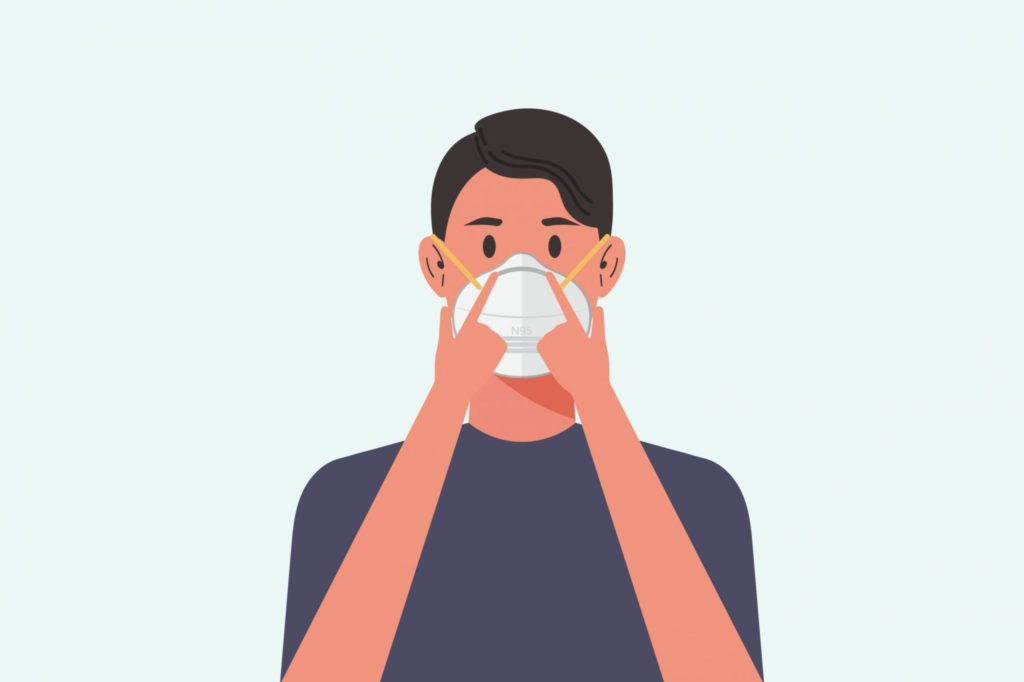Estimated reading time: 2 min
Wash or sanitize your hands.
Hold the respirator with one hand with the nose piece at your fingertips, letting the straps hang down loosely.

Using only the hand holding the N95 (do not touch it with your other hand), position it on your face so the bottom is under your chin and the nose piece is over the bridge of your nose.

While holding the N95 in position, take the following steps:

Using both hands, mold the nose piece to the shape of your nose by pushing inward with your fingertips.
Do not pinch the nose piece with one hand; this often results in an inadequate fit.

Check the seal of your N95 every time you put it on. N95s are only effective if they are properly sealed.


See additional tips from the Centers for Disease Control and Prevention.
*All images courtesy of the Centers for Disease Control and Prevention.